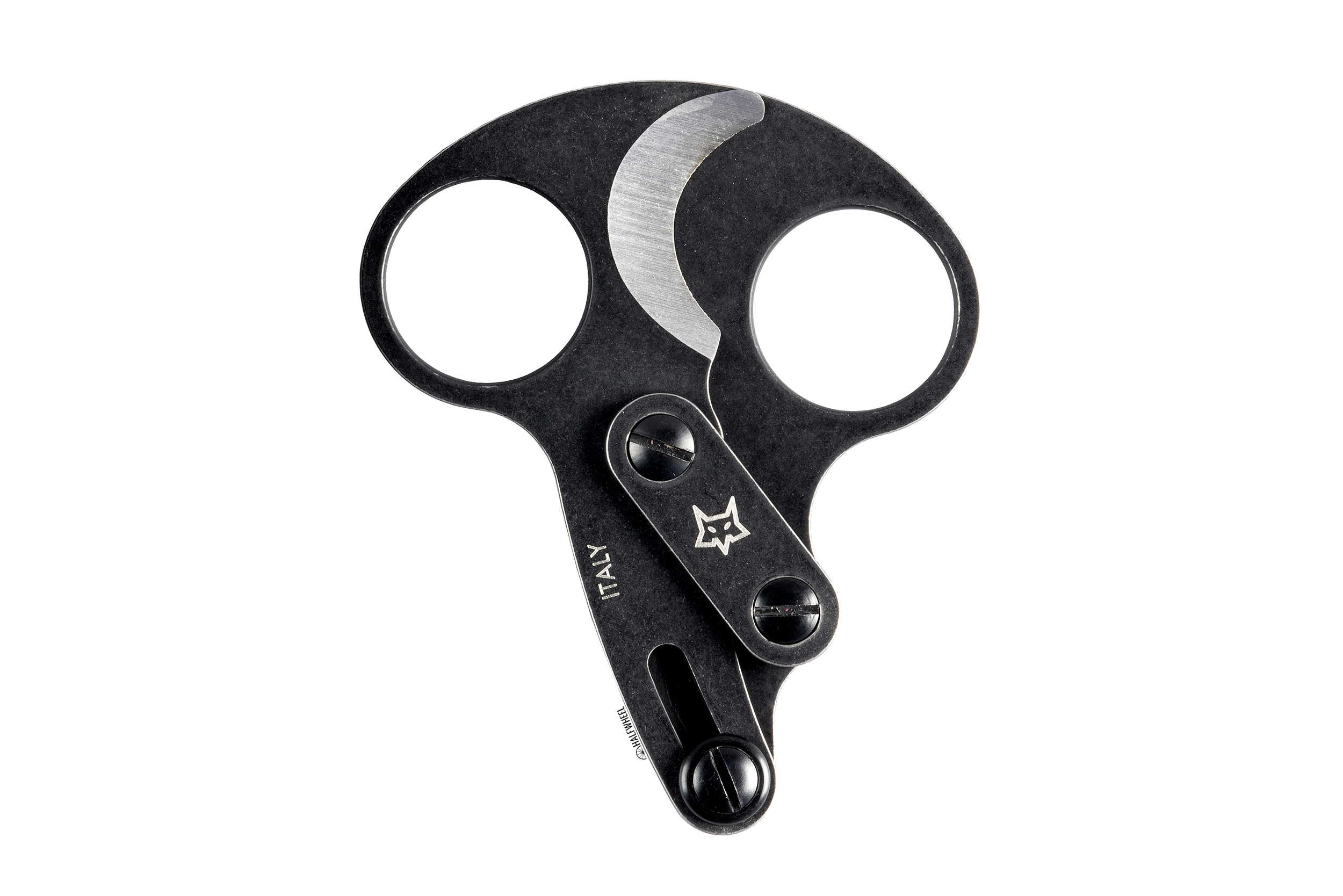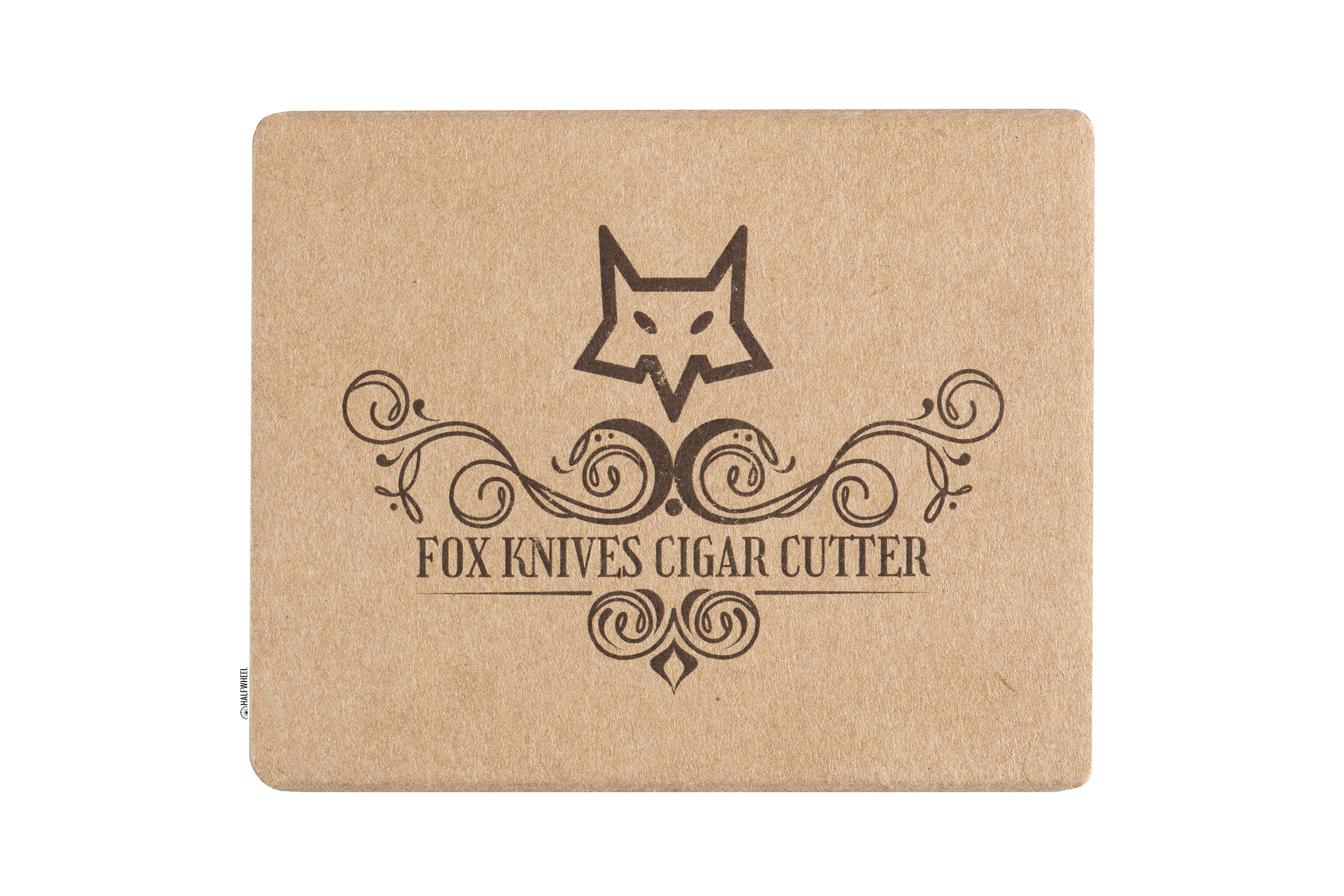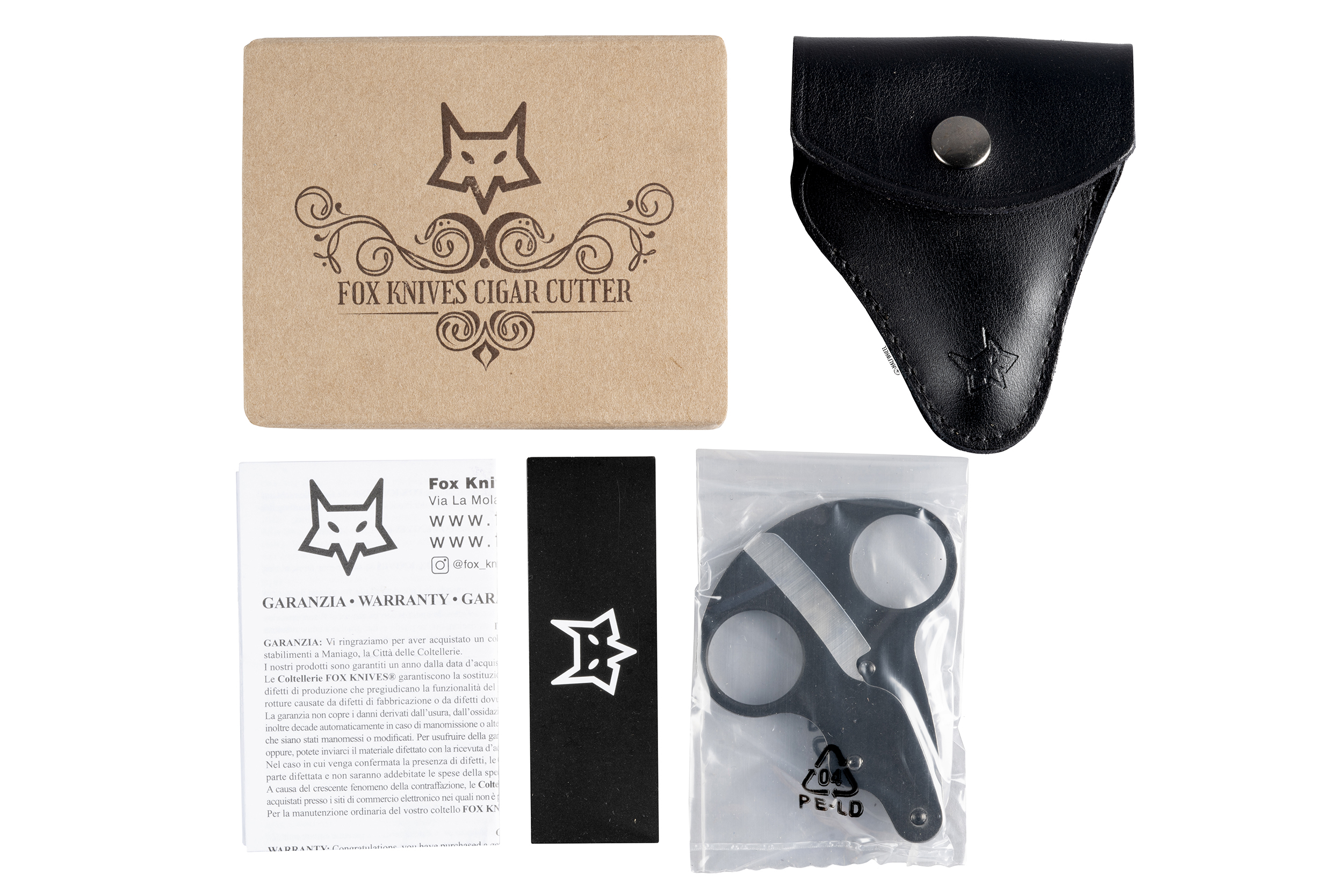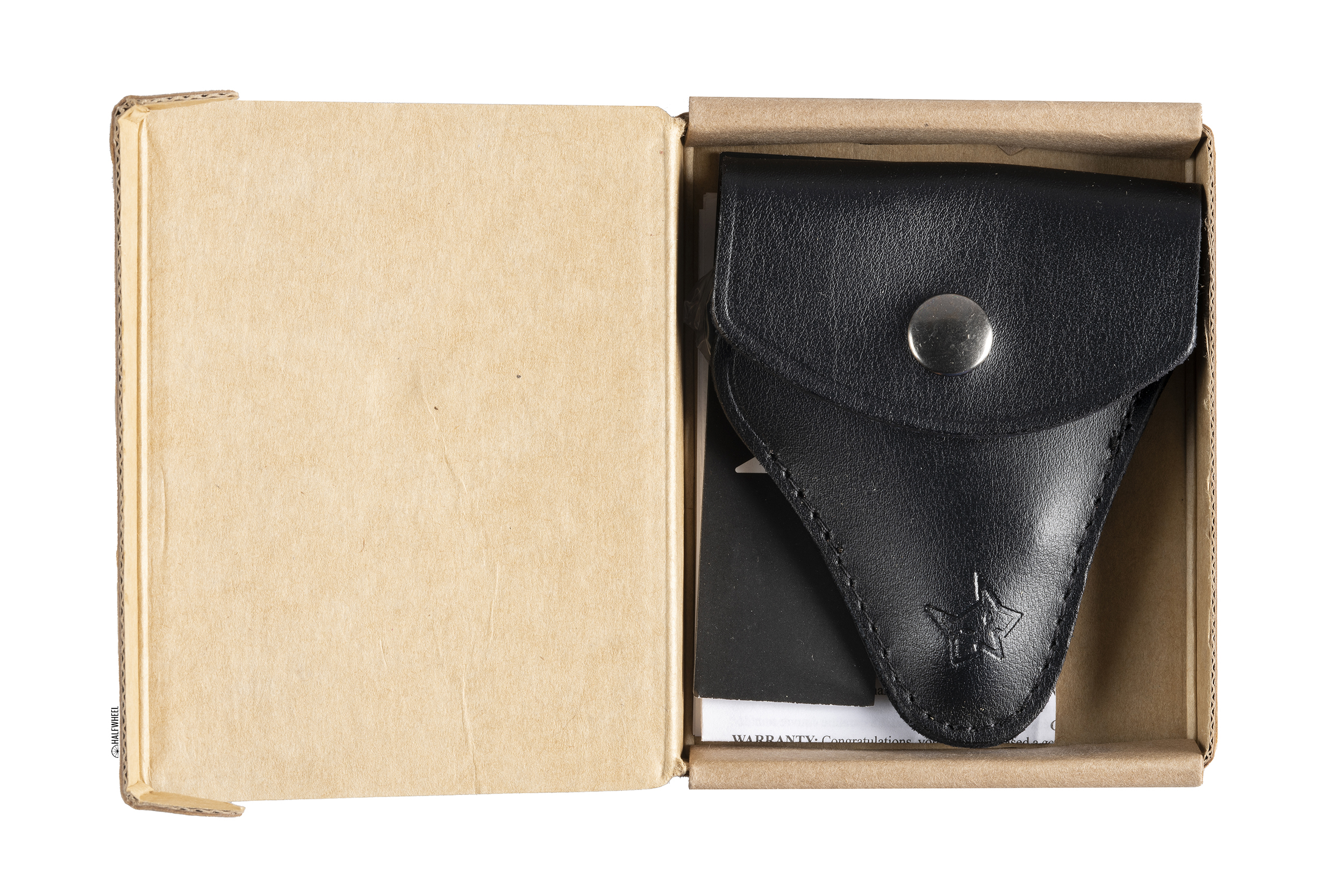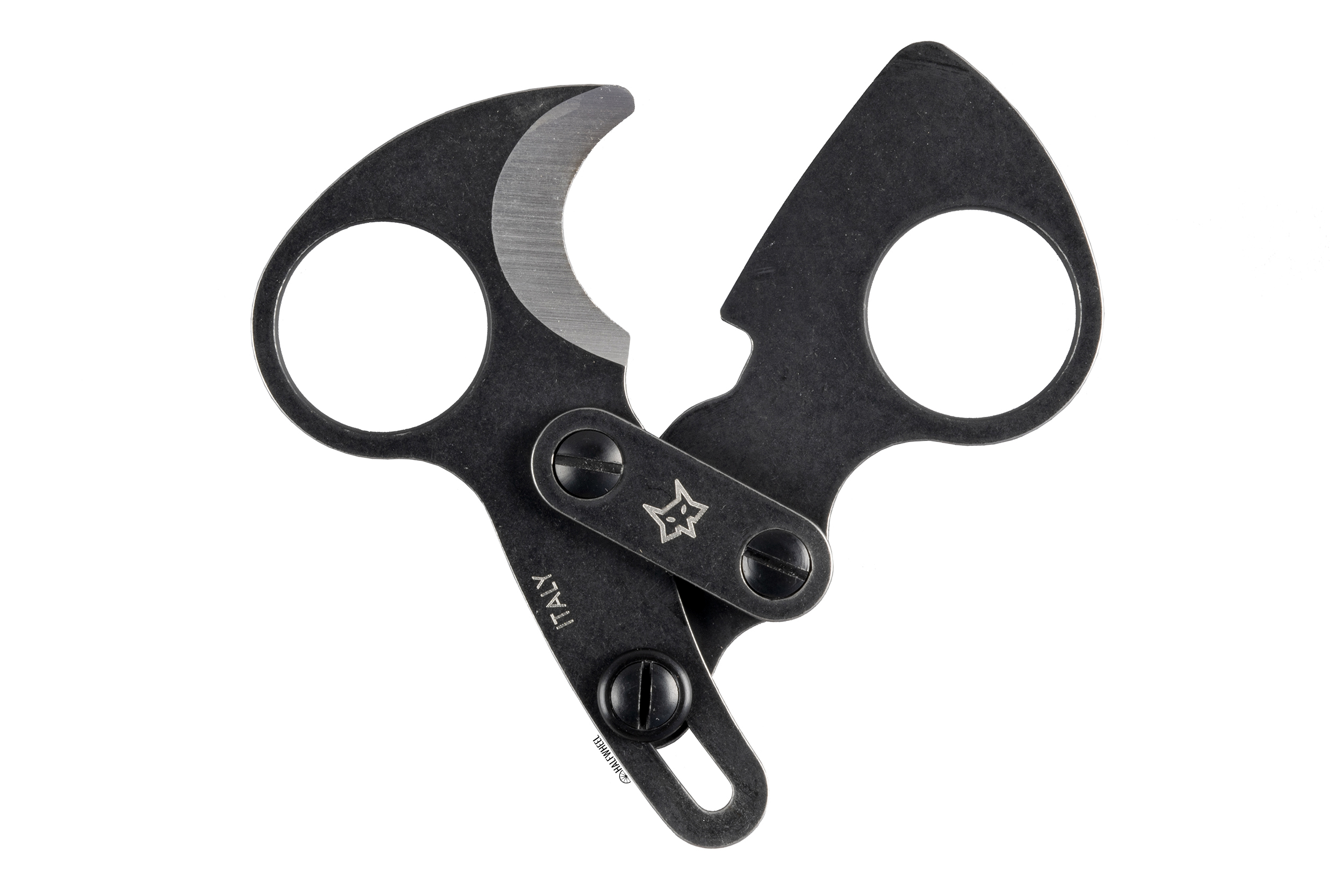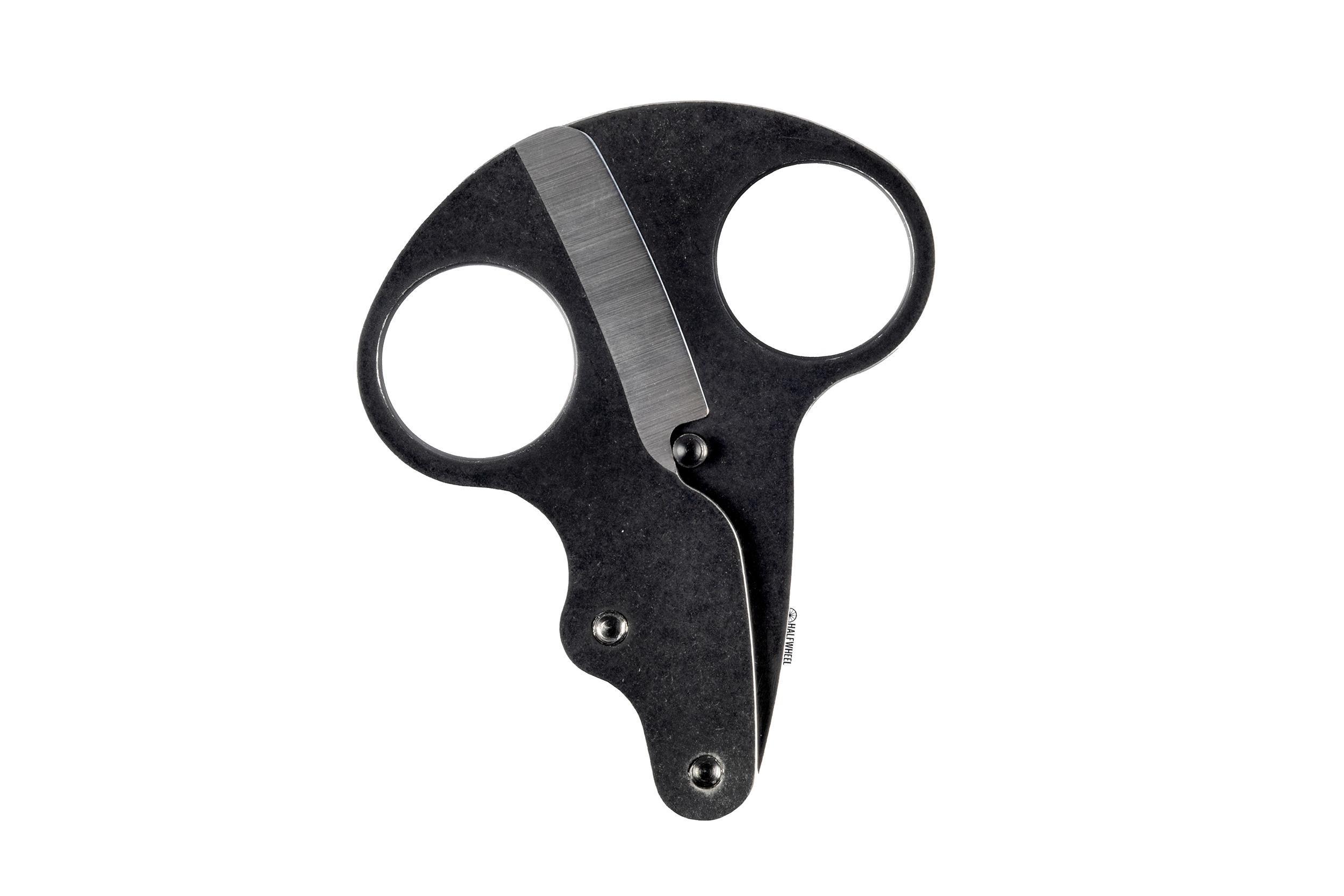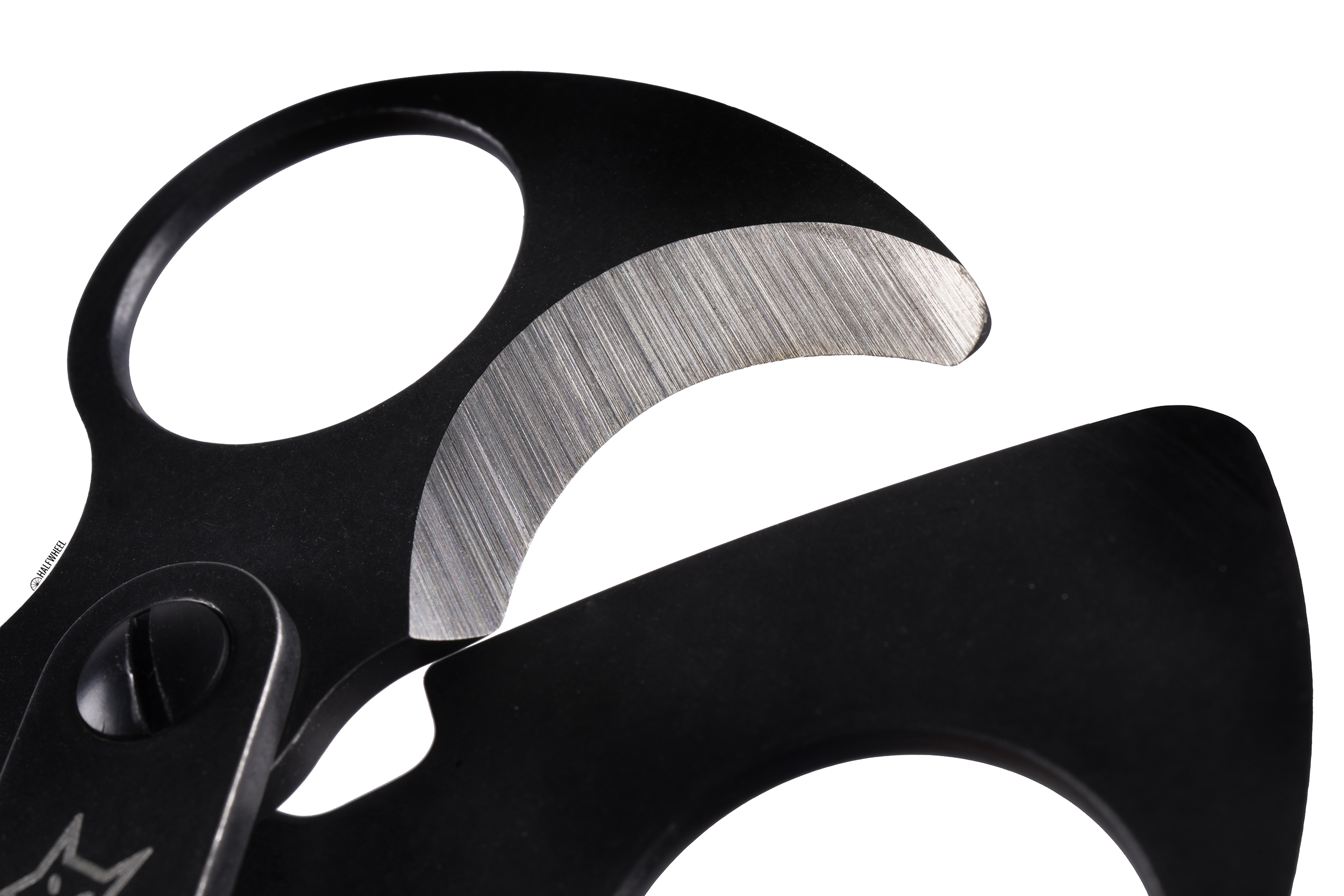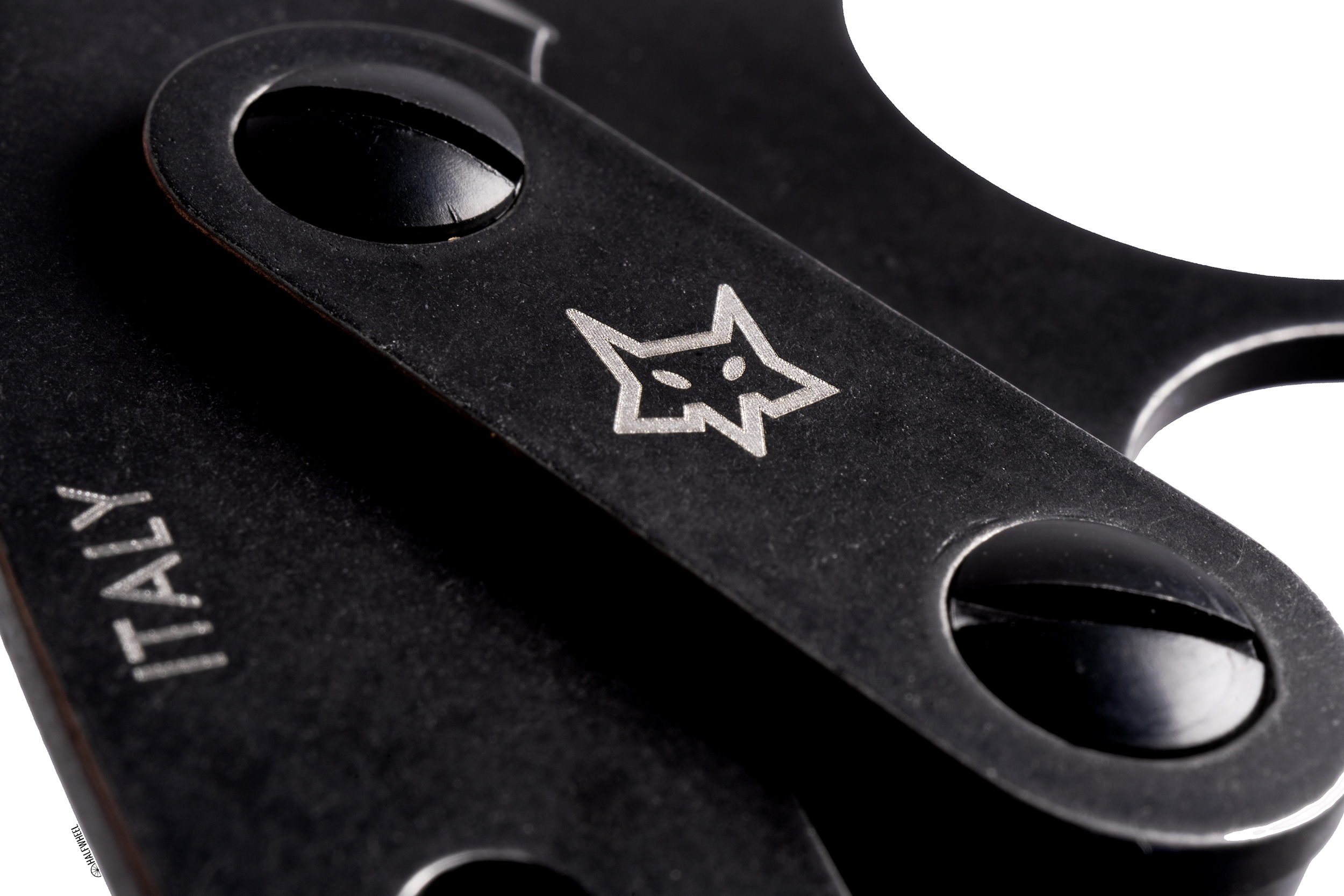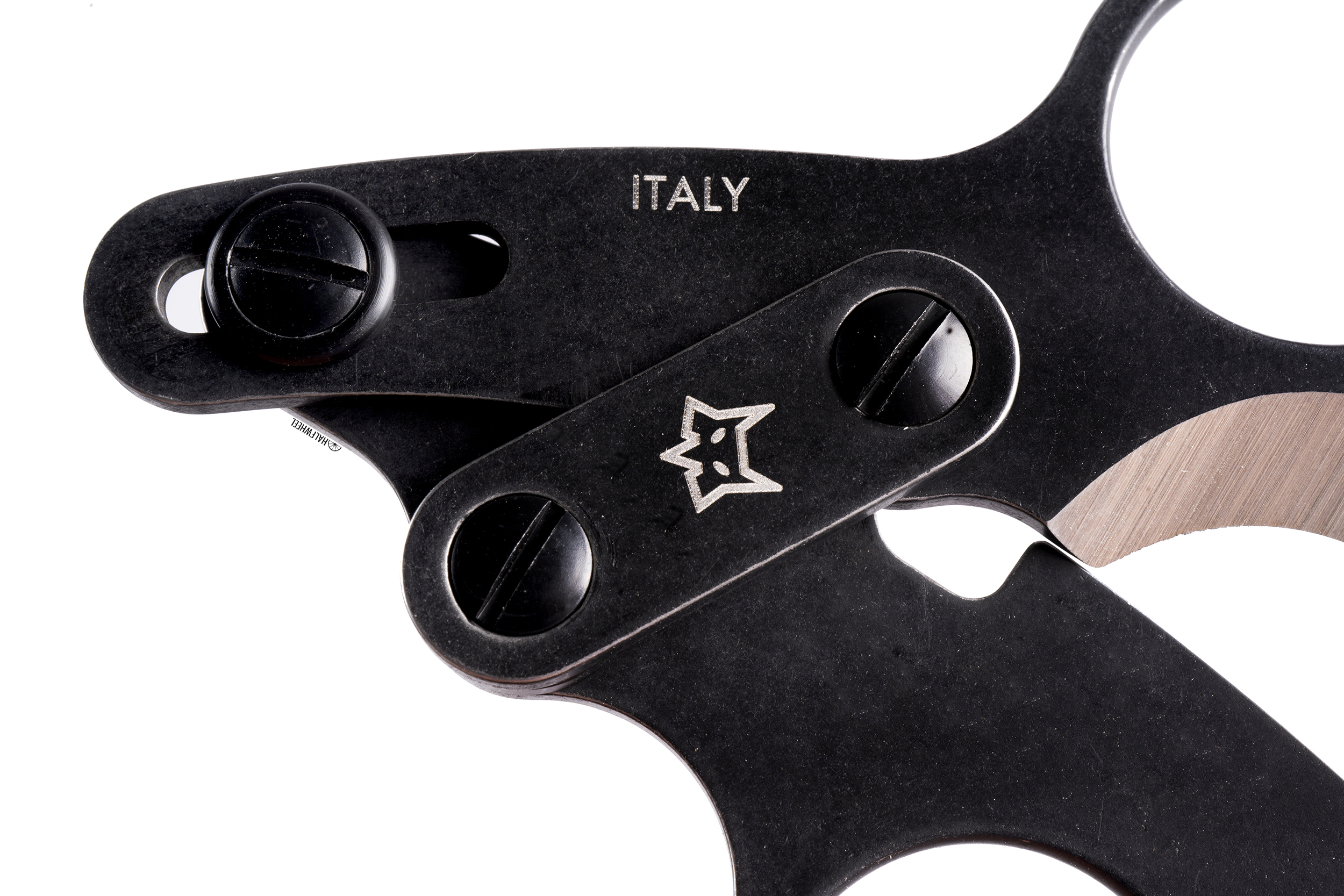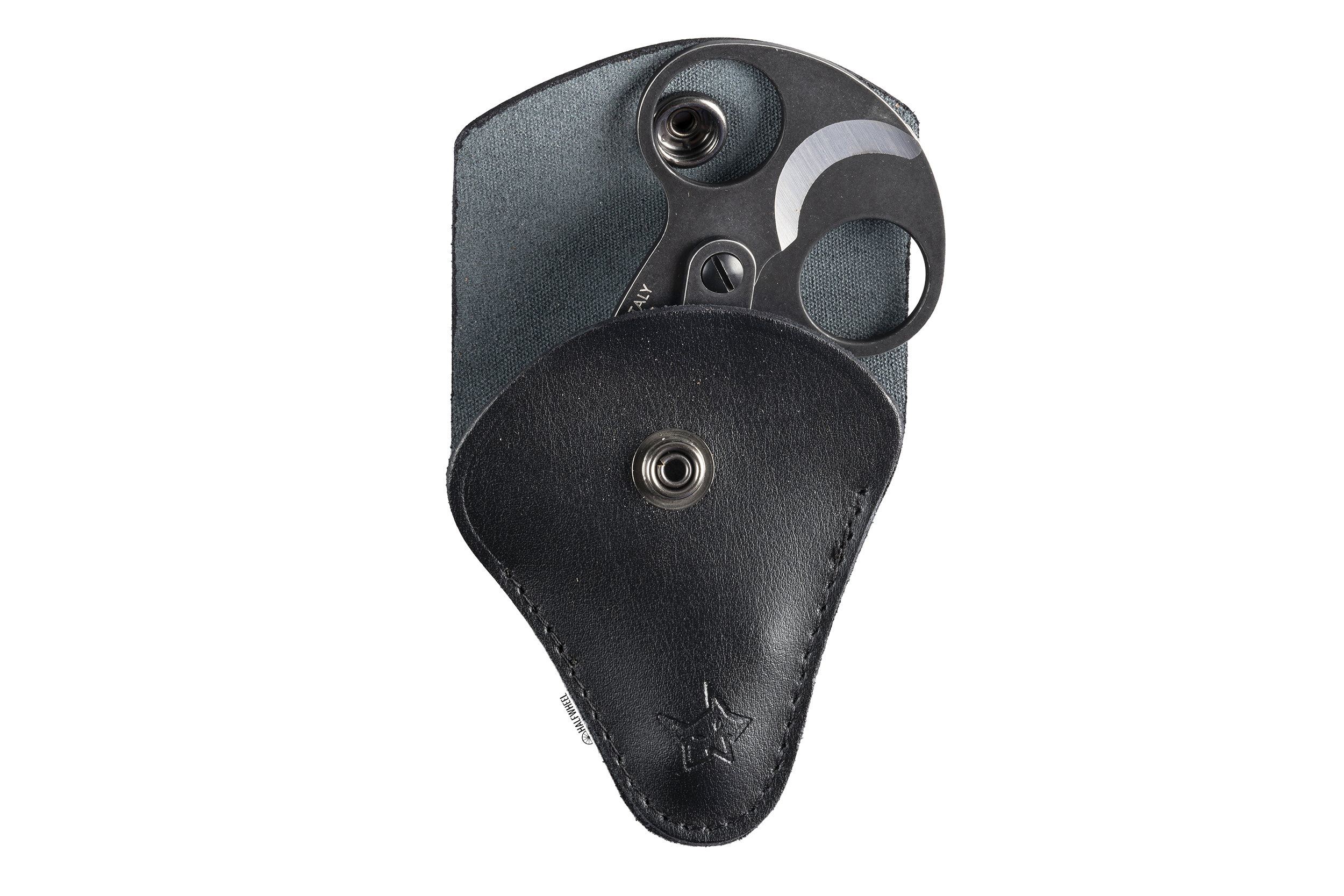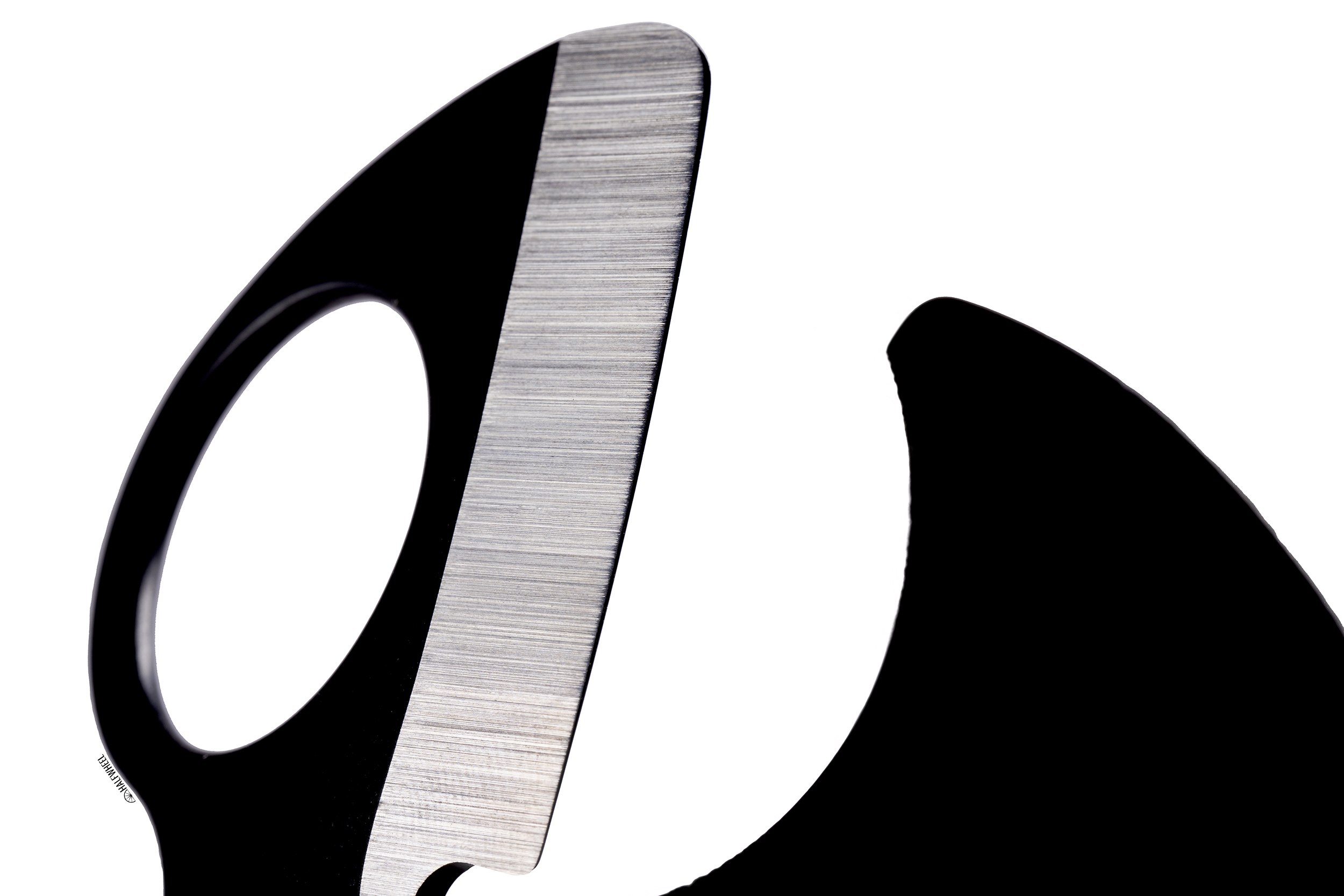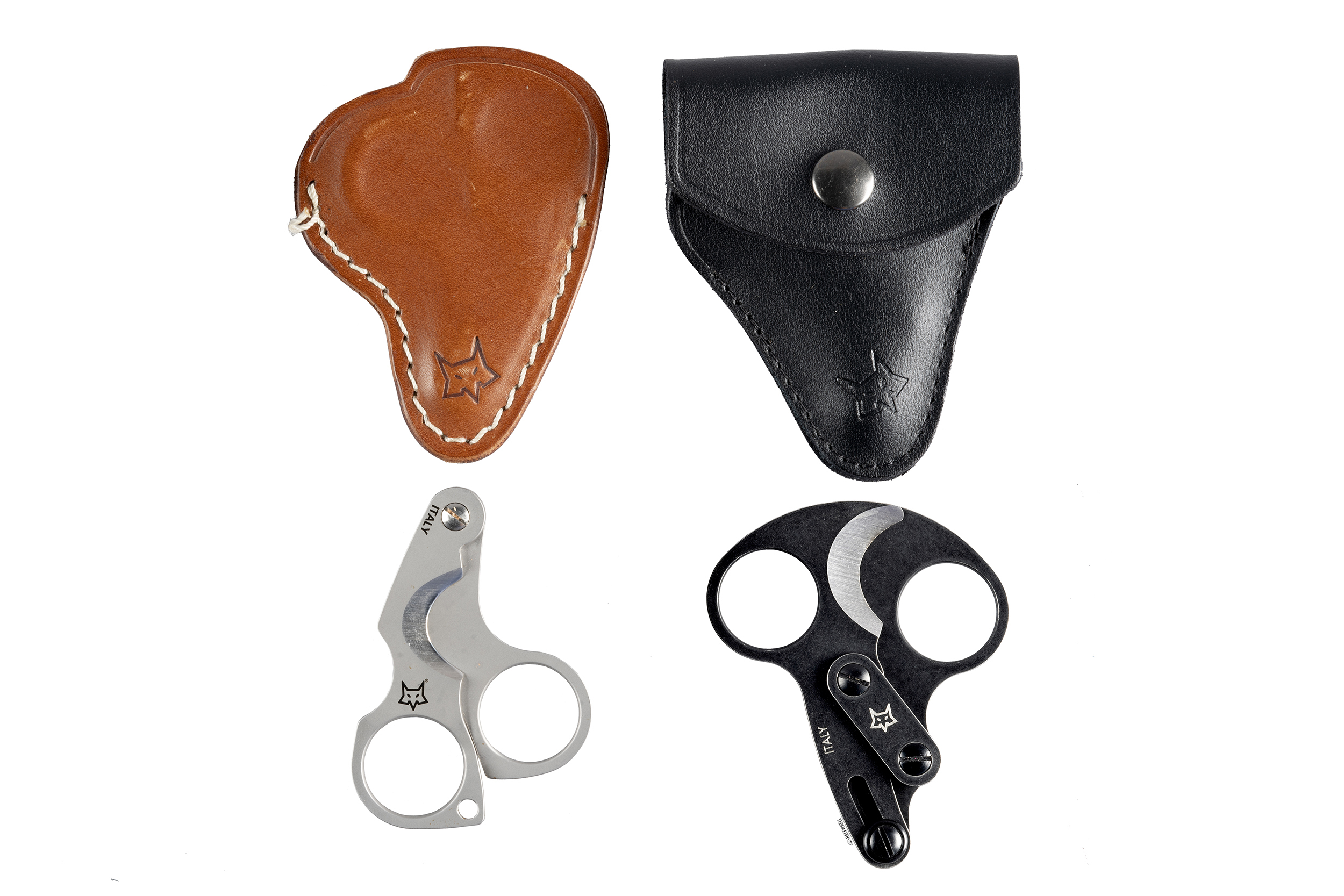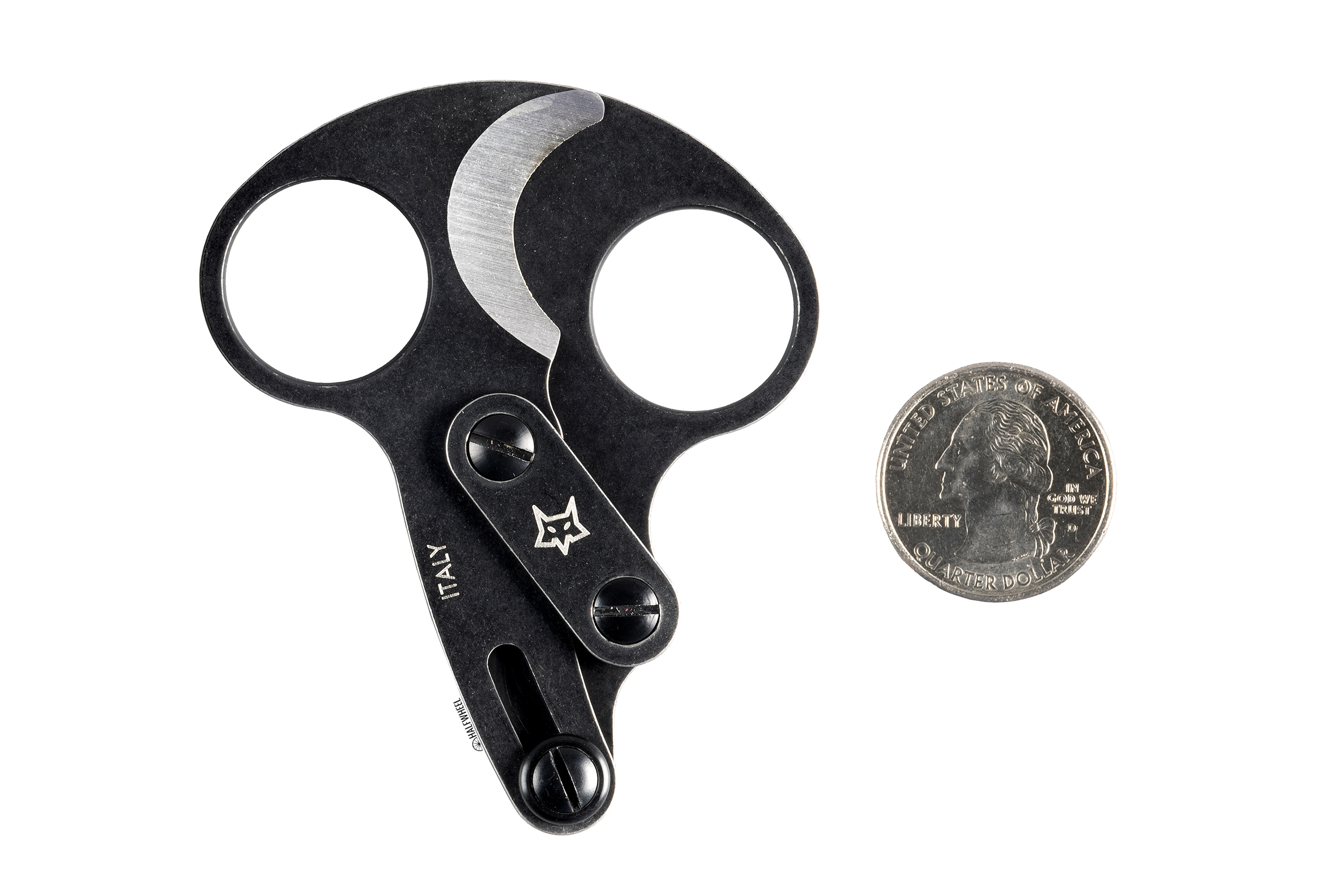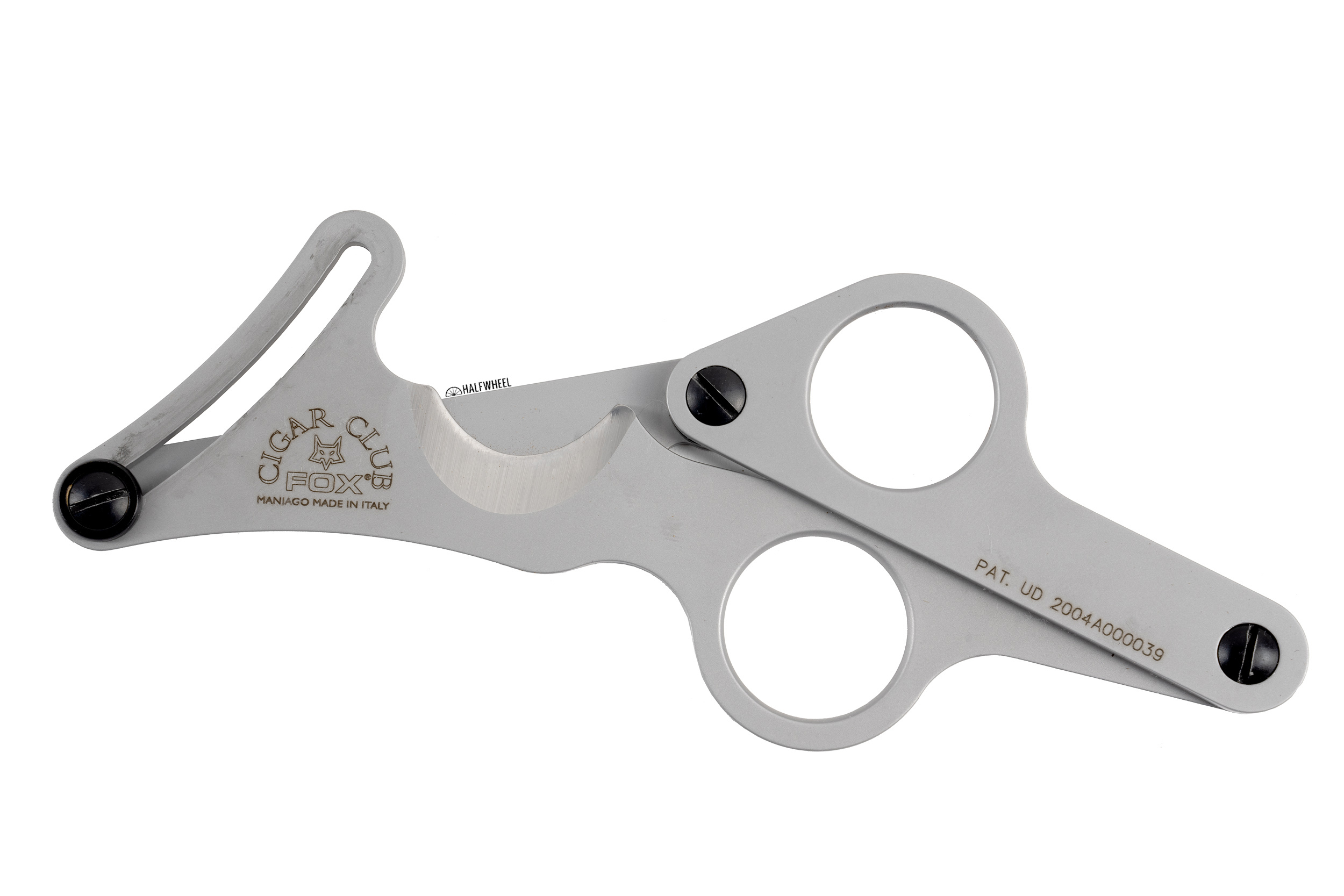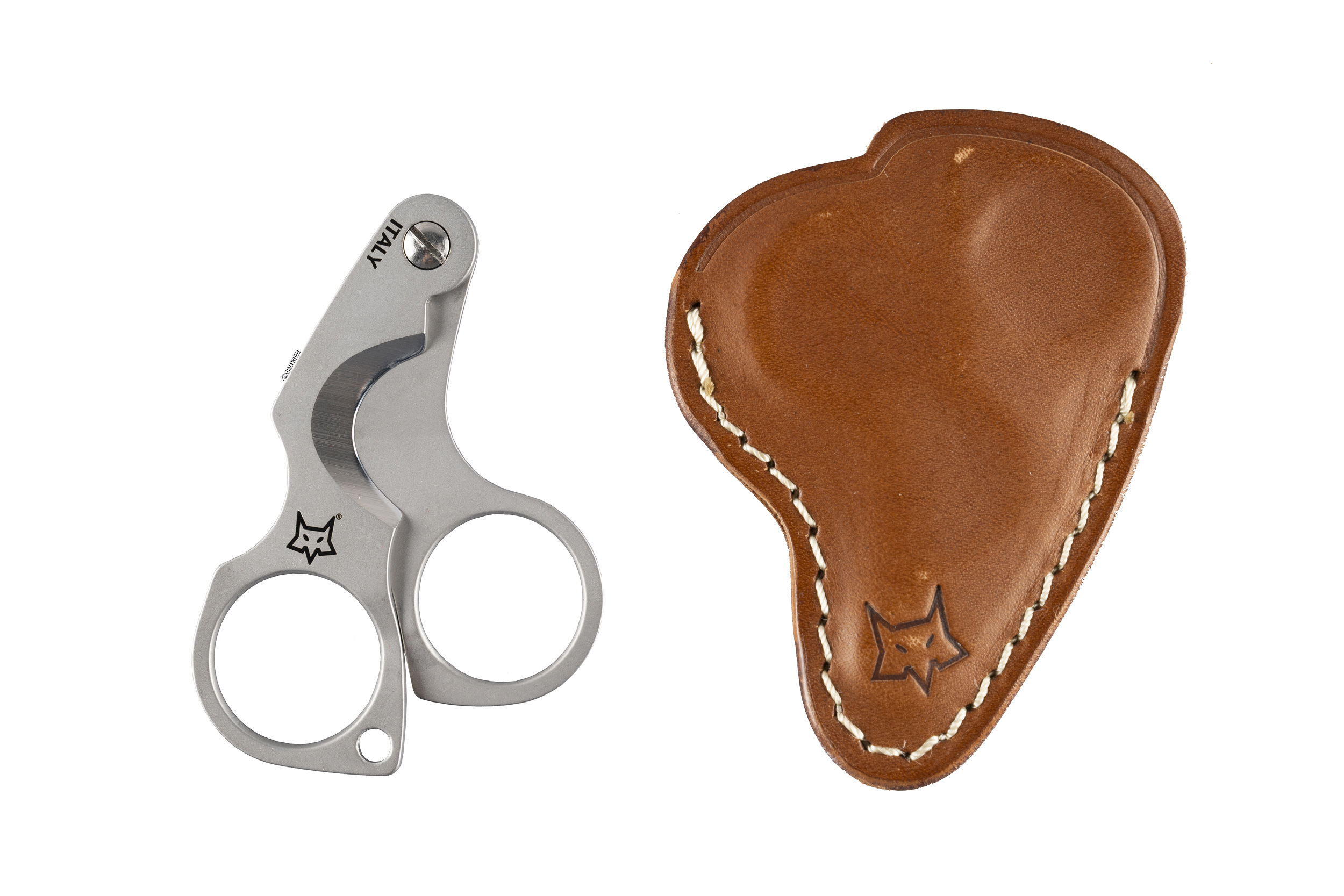Founded in 1977 by Oreste Frati, Fox Knives has won numerous awards for its knives over the years, including both the Overall Knife of the Year and Imported Knife of the Year at the 2021 Blade Show. However, more recent releases from the Italian-based company have also included a number of different cigar cutters.
Fox Knives has at least five different cigar cutter designs currently for sale:
- 749 — A guillotine-style cutter with a large rectangular blade, offered in silver and black
- 749/1 — This appears to be more or less the same as the above, though it’s attached to an ashtray
- Figaro 747 — A smaller cutter that functions more like scissors
- 748 — Similar to the 747 in function, but a different shape
- 746 Otello — A small cutter visually similar to the 747, but with a lever system similar to that used on the 749
The subject of today’s review is the new Fox 746 Otello, a single guillotine cutter that is sold in two different configurations, both of which seem to share a design element from already existing cutters released by the company: the overall basic visual design is noticeably similar to the Figaro 747, while the addition of both the lever system and cutting motion is extremely reminiscent—albeit quite a bit smaller in scale—of the company’s 749 Cigar Cutter.
WHAT IS IT?
Both visually and functionally, the Fox 746 Otello is actually a combination of two different items that are designed to cut cigars: a pair of cigar scissors and a double guillotine cutter. The blades are made entirely of 420OC stainless steel that measures between 54-55 on the Rockwell hardness scale, which is about the hardness of the types of steel used for many French chef’s knives. Weighing just 50 grams, the cutter measures 3.2 inches long and 1.97 inches wide when closed and 5.8 inches long when fully open.
There are two different versions of the 746 Otello: the base model features a “satin” exterior coating that has been bead-blasted, which means that small beads or spheres are shot against the metal at high speeds to give it a dull satin-like finish and to make it more scratch-resistant. However, the 746 Otello BSW—which is the model that I tested for this review—is covered with a black Idroglider stone-washed coating, which is a water-based formula containing Teflon that provides extra rust resistance and reduces resistance when cutting.
HOW MUCH DOES IT COST?
- Fox Knives 746 — $75
- Fox Knives 746 Otello BSW — $85
HOW DOES IT WORK?
As is the case when using a pair of scissors, I insert two fingers in the appropriate openings—in my case, my middle finger goes in the left opening while my thumb goes in the right opening—and open the cutter by pulling open the handles. This action reveals a half moon opening where the cap of the cigar should be placed. I then place the cap of the cigar in the opening at whatever depth will give me the cut I am looking for and begin to push the fingers closed slowly, like a pair of scissors.
As the blade cuts into the cap, it moves in both a downward motion and forward motion simultaneously due to the lever system it is attached to, with the end result being twofold: not only are the cuts extremely clean, but the cutting action is extremely smooth with no jerks or starts along the way. In addition, as the main blade moves downward and forward, the bolt it is attached to it moves simultaneously in an angled downward motion until it hits the end of its track.
The main blade of the cutter—which looks like a cleaver—continues to cut entirely through the cap before coming to rest at the end of its journey, and although there is no obvious click or locking mechanism to keep it from opening on its own, it is nowhere close being loose when it is fully closed.
One major point to be aware of is to always have the cap—i.e., the end that you are cutting off—is facing away from the blade with the beveled edge, while the larger section of the cigar left over—i.e. the part you will actually smoke—is on the same side as the Fox logo printed on the cutter.
The action on my cutter is extremely smooth and I had no noticeable issues with the blades becoming loose during the time I was testing it. In addition, I found that pushing the cap against the semi-circle opening—very slightly, as too much pressure will just crack the cap—while pushing the blade through the cigar helps stabilize the entire cutter and thus leads to cleaner cuts.
THE GOOD
- Extremely Sharp Blades That Cut Cigars Extremely Well (As Long As They Are Under 54 Ring Gauge) — A few times I ended up with some less-than-perfect results, but the vast majority of the time, the caps of the cigars under 54 ring gauge I used this cutter on were cut cleanly.
- The Amount Of Resistance Is Easy To Customize — Just get a flathead screwdriver and turn the screws until you get what you are looking for. Those screws are also designed to be removed entirely, making it easier for users to clean or sharpen the blades.
- No Issues Seeing Exactly What (And How Much) You Are Cutting — There are no issues placing the cap of the cigar precisely where you want it in the opening, and you can see exactly how much of the cap is going to be cut off.
- It Is Both Thin and Lightweight — If you are looking for a cutter option that can be easily carried around unobtrusively in your pocket, you are going to find it hard to beat the 746 Otello’s combination of lightweight and thin footprint.
- Extremely Nice Leather Sheath Is Included — It is a bit more flimsy than the one included with the Fox Figaro 747—and still does not include a belt loop—but it is made of premium Italian leather, something that is easy to see every time you pick it up.
THE BAD
- Awkward To Use, Even After Lots of Practice — Even after more than a month of using this cutter for each and every cigar I smoked I still find it awkward to go through the whole process of using this cutter. That involves me picking up the cutter, carefully inserting my fingers in the too-small openings—more on that below—making sure I don’t cut myself when pulling the blades open, then positioning the cap of the cigar and actually cutting through the cigar. The whole process takes entirely too long and is entirely too awkward, and I am not sure that it would ever get much better for me, regardless of how much I used it.
- Your Fingers Get Crammed — The way this cutter works means your fingers and the cigar finish in a very small window of space. It feels a bit crammed and only adds to the awkwardness.
- It Struggles With Larger Ring Gauges — There is no doubt that you can use this cutter to cut the caps off of just about any size or vitola you choose—I did just that multiple times while testing —but if you are looking to cut more than that off of a cigar that is larger than about 54 ring gauge, you are going to have a rough time. This is not due to the opening of the cutter, rather, the aforementioned crammed position you have to end up in to complete a cut.
- Getting Flat Cuts Requires More Concentration — As is the case with the Fox Knives 749 and the Figaro 747, this is one of those cutters where it is a bit more difficult to get a flat cut parallel with the foot of the cigar. While the cut is almost always going to be a clean line, whether or not that line is perfectly flat or slightly off takes a bit more time and effort, thus adding the overall awkwardness of the entire cutting process I noted above.
- Thinner Fingers Make The Problems Worse — While Brooks never experienced it, I had a real issue with pinching the cigars in the 10 or so times I used this cutter. I wear medium or large gloves and have thinner fingers than Brooks. That meant I put my fingers further into the finger holes than Brooks did and I found myself pinching the cigar when I went to cut it. This made cutting even 50 ring gauge cigars a bit difficult and cigars 56 ring gauge or thicker ended up being a two-step process. — Charlie Minato.
THE COMPETITION
There are a number of different manufacturers making cigars cutters that feature a design that combines scissor handles and a cigar cutter. With that said, one of the more obvious competitors to the 746 Otello is made by the same company: the Figaro 747 ($55), which features a design that is very similar to the 746 Otello and comes in only about $20 less price-wise. Both cutters can cut cigars up to about 54 ring gauge; however, the Fox Figaro 747 includes a key ring hole on the handle and a built-in notch for your thumb that the Otello lacks.
Additional Competitors
- Fox Knives 749 ($85) — The bigger brother to the 746 Otello—albeit at almost the same price point—the 749 has the advantage when it comes to being able to cut larger ring gauge cigars, but it is quite a bit larger in size and noticeably less portable than the Otello. It is also the clear winner when it comes to the actual quality of cuts and ease of use compared to any of the other Fox Knives cutters I have reviewed thus far.
- Red Horse Condor Cigar Cutter ($285) — This cutter features a somewhat similar design as the Otello, but although it costs more than three times the price of the Fox Knives cutter, it does not cut cigars nearly as well.
- Credo 80 Ring Gauge Double Blade Cutter ($9.95) — While it features a similar design to the 746 Otello, the Credo is an eighth of the price and can cut cigars up to 80 ring gauge. It is also quite a bit flimsier and the blades on the Credo showed signs of dulling fairly quickly when I tested it.
- Screwpop Chopo ($29.95) — Although the Chopo is also a cutter that sports a unique visual look, it is just not a good cigar cutter.
SHOULD YOU BUY IT?
No.
The Fox Knives 746 Otello BSW is certainly a novel concept and does a good job cutting cigars most of the time, but even with the unique lever system, the results I ended up with were comparable to what I got when I tested the Figaro 747. In addition, that lever system does absolutely nothing to address some of the other main issues I had with the Figaro 747, including the overall awkwardness of the cutting process. Fox Knives continues to make interesting cutters—albeit nothing yet that includes the same magic that the 749 has—but in the end the issues I faced using the 746 Otello BSW are significant enough to make it an inferior choice compared to any number of high quality double guillotine cutters currently on the market.

